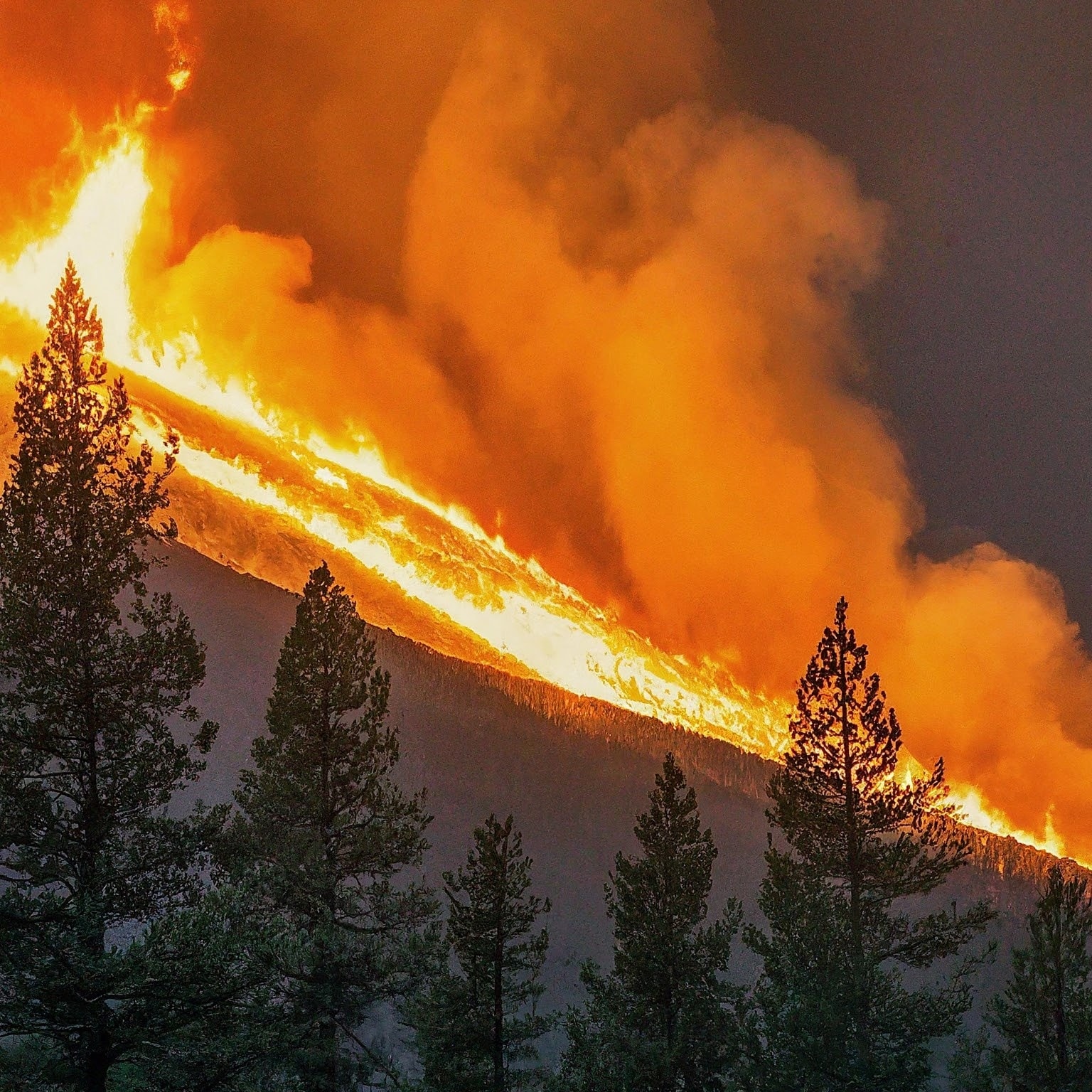(OPINION) Did you know the Bible tells us that even creation itself is longing for the return of Jesus?
The Apostle Paul reveals to us in the Book of Romans Chapter Eight that “the earnest expectation of the creation eagerly waits for the revealing of the sons of God and that creation was subjected to futility, not willingly,
but because of Him who subjected it in hope; because the creation itself also will be delivered from the bondage of corruption into the glorious liberty of the children of God. For we know that the whole creation groans and labors with birth pangs together until now”.
All of creation fell under a curse when Adam and Eve partook of the forbidden fruit and disobeyed the Word of the Lord. The curse on creation can be understood as the disruption of the harmonious relationship that existed prior to the Fall.
As a consequence of human disobedience, the natural order of creation was affected. The Bible describes some of these effects in Genesis 3:17-19, where it states that the ground would be cursed, and Adam would have to toil and struggle to cultivate the land, experiencing hardship and pain in his work.
A more in-depth understanding of this can be found after the Fall, when God pronounced a curse on the ground, saying to Adam, “Cursed is the ground because of you; through painful toil, you will eat from it all the days of your life” (Genesis 3:17). This suggests that cultivating the land and producing food would become more difficult, requiring increased effort and toil.
In the same verse, God also mentioned that thorns and thistles would now grow in the fields. This indicates an increase in undesirable plants that would impede agricultural productivity and necessitate greater labor.
As part of the consequences for Eve’s disobedience, God said, “I will make your pains in childbearing very severe; with painful labor, you will give birth to children” (Genesis 3:16). This suggests that the natural process of childbirth would become more painful and challenging.
Prior to the Fall, it is implied that animals did not prey on one another. However, after the Fall, there seems to have been a change in the animal kingdom, with some animals becoming carnivorous. In Genesis 3:14, God says to the serpent, “Cursed are you above all livestock and all wild animals!” This implies a disruption in the harmony of the animal kingdom.
One of the most significant changes introduced by the Fall was human mortality. In Genesis 3:19, God tells Adam, “For dust you are, and to dust you will return.” This indicates that death became an inevitable part of the human experience. Furthermore, the apostle Paul writes in Romans 8:20-22 that creation was subjected to futility and decay, suggesting a broader impact on the natural world.
Now we can clearly see why all of creation groans and labors with birth pangs together until now! A new heaven and new earth will soon come and these curses will be broken! This will fulfill many verses such as Isaiah 11:6-9, which describes a future ideal state:
“The wolf will live with the lamb, the leopard will lie down with the goat, the calf and the lion and the yearling together; and a little child will lead them.” This passage is considered a poetic expression of peace and reconciliation, symbolizing the cessation of violence and conflict. Other passages like Isaiah 65:25 and Hosea 2:18 reveal that there will come a future time of reconciliation among animals and creation.
Another interesting fact is that Paul used the term “birth pangs” when describing the process of creation waiting for its restoration. This concept of “birth pangs” in the Bible is often used metaphorically to describe a process of anticipation, struggle, and eventual fulfillment. We can understand the general process of birth pangs in terms of progression and intensity.
Initial Signs: Just as birth pangs begin with subtle indications that labor is approaching, there will be initial signs or indicators of significant change or the imminent arrival of something new. These signs can include events, circumstances, or shifts in the world that point to the soon return of Christ.
Increasing Frequency and Intensity: As labor progresses, contractions become more frequent and intense, this represents a period of increased intensity, where the signs of the coming of the Lord become more pronounced and occur more frequently.
As creation increases in intensity of birth pangs we can expect to see an increase in earthquakes and volcanoes as the very Earth itself will continue to travail in these last days.
Transition: Transition is the final stage of labor before the actual birth takes place. It is marked by the most intense and powerful contractions.
This transition phase of birth pangs could represent a climax or critical period of upheaval, calamity, disasters, and everything that Christ spoke of when he told us what to watch out for leading to his return.
Fulfillment and New Beginning: Just as birth brings forth new life, ultimately this will lead to the fulfillment of God’s promises and the restoration of all things spoken of by the Prophets (Acts 3).
Paul wasn’t the only author in the Bible who spoke of “Birth Pangs”
Matthew 24:8 – In this passage, Jesus is describing the signs of the end times and says, “All these are the beginning of birth pains.” Here, Jesus compares the signs of the end times to birth pains.
1 Thessalonians 5:3 – Paul uses the imagery of birth pains in the context of the second coming of Christ. He writes, “While people are saying, ‘Peace and safety,’ destruction will come on them suddenly, as labor pains on a pregnant woman, and they will not escape.” Here, the metaphor underscores the sudden and unexpected nature of the coming judgment.
Isaiah 26:17-18 – In this passage, the prophet Isaiah uses the metaphor of birth pangs to describe the anguish and struggle experienced by the people of Israel during a time of judgment and restoration.
The verse states, “As a pregnant woman about to give birth writhes and cries out in her pain, so were we in your presence, Lord. We were with child, we writhed in labor, but we gave birth to wind. We have not brought salvation to the earth, and the people of the world have not come to life.”
Once we understand this we can now expect to see more “natural disasters” on Earth as the labor pains intensify and all of creation eagerly waits for the soon arrival of the return of Christ and the revealing of the “sons of God” referring to believers in Jesus Christ, who has a personal relationship with God and have received the Holy Spirit.
“For those who are led by the Spirit of God are the children of God. The Spirit you received does not make you slaves so that you live in fear again; rather, the Spirit you received brought about your adoption to sonship.
And by him, we cry, ‘Abba, Father.’ The Spirit himself testifies with our spirit that we are God’s children. Now if we are children, then we are heirs—heirs of God and co-heirs with Christ if indeed we share in his sufferings in order that we may also share in his glory.”
In this context, the apostle Paul is emphasizing the relationship between believers and God through the work of the Holy Spirit. The “sons of God” are those who have received the Spirit and have become part of God’s family through adoption.
They have a close, intimate relationship with God, referred to as “Abba, Father,” indicating a sense of familiarity, trust, and love.
Paul explains that being a “son of God” entails being led by the Spirit of God and experiencing freedom from fear and bondage. It also involves sharing in the sufferings of Christ, as well as sharing in His glory. As children of God, believers have a future inheritance and are considered co-heirs with Christ.
















